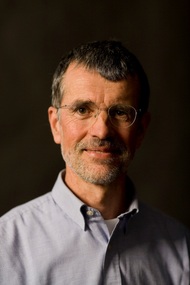
Harald Paulsen
Institute of Molecular Physiology
Johannes-von-Müller-Weg 6, Room 00125
Phone.: 06131/39-24633 * Fax: 06131/39-23787 *
E-mail: paulsen<AT>uni-mainz.de
C.V.
- 1973-78 Chemistry (Göttingen, Diploma in Organic Chemistry)
- 1983 Dissertation (Physiolog. Chemistry, Prof. Zachau, LMU München)
- 1985-88 Post-doc (Harvard, Cambridge, MA, USA, Prof. Bogorad)
- 1988-95 Assistent/ Oberassistent (LMU München), research semesters in Jerusalem and Oxford, U.K.
- 1992 Habilitation in Plant Science (LMU München, Prof. Rüdiger)
- 1996 C4 (full) professor in Plant Physiology (U. Mainz)
Teaching
- B.Sc. course Plant Physiology and Biochemistry
- M.Sc. course Molecular Plant Physiology I, II
- Lectures and seminars on photosynthesis, proteins, spectroscopy, soft skills etc.
Committees
- Acting director of Institut für Allgemeine Botanik: 1996-2017. Acting director of Institut für Molekulare Physiologie: since 2017
- Dean 2003-2008
- Director of Gutenberg Teaching Council (GTC)
Molecular Plant Physiology
RESEARCH
Light-harvesting Complexes in the Photosynthetic Apparatus of Higher Plants: Molecular Structure and Function
Light-harvesting complexes of the photosynthetic apparatus are the most abundant membrane protein in plants and warrant the high efficiency of plant photosynthesis. The complexes, containing an apoprotein of roughly 250 amino acids and 18 non-covalently attached pigments, spontaneously self-organize in vitro. Taking advantage of that, we construct recombinant light-harvesting complexes with structural alterations. By introducing spin labels, the biomolecules become amenable to EPR spectroscopy, which is useful for assessing the structure of individual protein domains and their structural dynamics. To test potential technical applications, we immobilize light-harvesting complexes on solid surfaces and study hybrid complexes with organic dyes and inorganic semiconductor nanocrystals (quantum dots).
Water-soluble Chlorophyll Protein (WSCP)
WSCPs are found in Brassicaceae and a number of other families; their function is still unclear. Their structural stability is astonishing: Even after an hour of boiling their native structure stays intact. We study recombinant WSCP to understand its stability and to obtain clues for its biological function.
Biomineralizing Proteins
Diatoms use silica-precipitating proteins to produce their glass cell walls. We synthesize recombinant versions of silaffin, a biomineralizing protein of the diatom Thalassiosira pseudonana. By systematically varying its amino acid sequence and introducing protein modifications, we wish to identify those structural characteristics that are involved in silica-precipitating or –stabilizing properties of the protein.
Three Recent Publications
Seiwert et al., Sci. Rep.7, 5158 (2017)
Agostini et al., Sci.Rep. 7, 7504 (2017)
Zerfass et al., Proteins – Structure, Function, and Bioinformatics 85, 2111-2126 (2017)
Appointments
Advisor for grantees of the Studienstiftung des Deutschen Volkes
Steering Committee of MPGC and of the Graduate School of Excellence MAINZ.